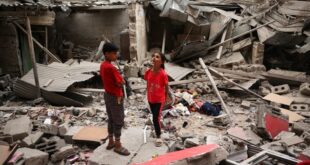Roughly 26,000 people whose homes were destroyed staying at schools and makeshift facilities

The 7.6 magnitude earthquake that hit the western coastline of Japan on New Year's has killed 213 people as of Thursday. Eight of the deaths were at evacuation centres, where rescued people died from injuries and sickness.
Such deaths weren't directly caused by the quakes, fires and mudslides. They happened in alleged safety.
"The pressures and stress of living in a place you aren't used to lead to such deaths," said Shigeru Nishimori, a disaster official in Ishikawa prefecture, the hardest-hit region.
Some 26,000 people whose homes were destroyed or deemed unsafe are staying at schools and other makeshift facilities. Even minor rain and snow can set off landslides where the ground is loose from the more than 1,000 aftershocks that rattled the region for more than a week. Half-collapsed homes might flatten.
Shinichi Kuriyama, director at the International Research Institute of Disaster Science, who has studied the earthquake, tsunami and nuclear disaster that hit northeastern Japan in 2011, warned that the chances for death double among populations undergoing a disaster.

He said the number of deaths in Ishikawa evacuation centres surprised him.
"I'm really shocked," he said. "Communication is key and it appears to be sorely lacking."
Vulnerable can be overlooked
Kuriyama said the most vulnerable can be overlooked, missing food that's being distributed, for instance, because they are unaware or can't reach it. He added that Japanese tend to "suffer in silence," which can make things worse.
Deaths from the New Year's temblor centred on Noto Peninsula in Ishikawa have climbed daily, as rescue teams pull more bodies from the rubble. Of the deaths, 98 were in Suzu city, 83 in Wajima and 20 in Anamizu, with the rest in smaller numbers among four other towns. The number of missing people declined in recent days and now stands at 52.

Survivors pulled from rubble 4 days after Japanese earthquake
5 days ago
Unlikely survivors are pulled from the rubble four days after a devastating earthquake struck Japan. Some parts of Ishikawa Prefecture will never look the same and will take years to rebuild.
Those injured totaled 567, and 1,830 homes were destroyed or seriously damaged, according to Ishikawa officials. More than 14,000 homes were without electricity, and nearly 59,000 homes had no running water.
A tsunami reaching as high as about 3 metres spewed into coastal homes after last week's biggest quake. A fire destroyed part of Wajima city. A search began Tuesday into the remains of the fire for bodies.
Risk of infection rises
Authorities warned about the raised risk of infectious diseases breaking out among people crammed into shelters. Food and drinking water supplies were short, especially initially.
People slept on cold floors, some without blankets, amid dropping temperatures and harsh winds. Sheets were hung for partitions to provide privacy and in an effort to curtail the spread of disease.

A week after the disaster hit Ishikawa, camping tents were set up at a big hall to accommodate 500 people — a change that could prevent further post-disaster deaths. People who are pregnant, sick or old get priority for the revamped accommodations.
Soon, they'll be able to move to the 110 hotels and inns that volunteered to accept 3,000 people from the quake-damaged region. Nearby prefectures were also offering to open up their hotels.
With schools shuttered, people worried about the children, although some classes were moved to other campuses.
As criticism grew about the government's disaster response, Prime Minister Fumio Kishida's administration earmarked the equivalent of $45 million Cdn for the disaster to provide food, water, blankets, milk and clothing. The spending was expected to grow.
*****
Credit belongs to : www.cbc.ca
 MaharlikaNews | Canada Leading Online Filipino Newspaper Portal The No. 1 most engaged information website for Filipino – Canadian in Canada. MaharlikaNews.com received almost a quarter a million visitors in 2020.
MaharlikaNews | Canada Leading Online Filipino Newspaper Portal The No. 1 most engaged information website for Filipino – Canadian in Canada. MaharlikaNews.com received almost a quarter a million visitors in 2020.







